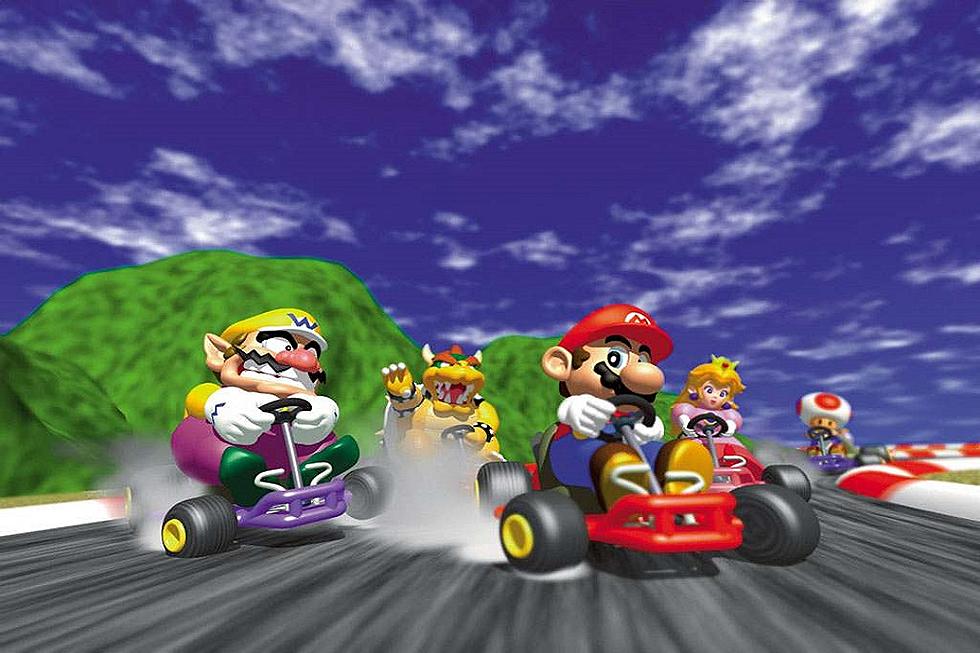
Transitioning From Flat to Physics Defying With F-Zero X
Nintendo has managed create several pretty great racing franchises in its long tenure as a prime force in the industry. Mario Kart is the go-to for many players for its fun and cartoonish style of racing that appeals to all ages and player skills. However, with the often prominent Mario Kart titles often taking the spotlight on Nintendo consoles, it’s easy to forget that the company has another more futuristic IP that caters to fans of breakneck speed and pure racing: the F-Zero series. It was on this day in particular that F-Zero X was released on the Nintendo 64, bringing unparalleled speed and smoothness to the racing genre.
F-Zero X came into a climate full of competition in 1998. PlayStation already had their own futuristic racer in the form of Psygnosis’ Wipeout. Wipeout fused the futuristic themes of the original F-Zero with the weapon and in-race battle concepts of Mario Kart to create a game that was uniquely a hybrid of both. Nintendo had not returned to the F-Zero series since its initial incarnation on the Super Nintendo in 1990. If it was going to come back, it was going to have to come back big.
Tadashi Sugiyama and Shigeru Miyamoto headed up the team for Nintendo’s return to F-Zero. In order to compete with games like Wipeout, Hi-Octane, and especially Extreme-G, which was a futuristic motorcycle racer had come out a year earlier on the Nintendo 64, Miyamoto and Sugiyama made smooth speed and track design the primary focus of F-Zero X. Where the original only had pretty much flat tracks, F-Zero X featured dizzying tracks suspended in the air that twisted and turned in every direction. Furthermore, many tracks featured tunnel areas where drivers could move in 360 degrees in the tunnel, allowing for fantastic loops and turns in the overall structure.
Speed was another major focus in F-Zero X. The game couldn’t just be fast. It had to run just about flawlessly. To this end, the development team worked out some limitations in order to perfect frame rate. F-Zero X introduced players to hectic races featuring thirty other vehicles trying to vie for pole position. In order to make this chaos possible without risking framerate, the team made the backgrounds of the game purposely lower quality with a fog effect to hide it. Furthermore, as vehicles passed they would become less detailed in order to keep the framerate in perfect working order. These workarounds came together to offer players a seamless racing experience at breakneck speed.
In order to add some depth to the game without going the route of weapon power-ups that so many other racers were taking, the team reworked how the booster systems, vehicle durability and track bonuses worked. There are 30 vehicles to choose from each with small customizable options in speed and acceleration, but on the field, boosting is a balance between victory and failure. After the first lap boosts become available and borrow from a shared meter that functions as a vehicle’s shield. The more a player boosts, the weaker the vehicle’s durability becomes. Strips on the track boost the meter and certain markings give boosts outright, making a touch and go game of determining the right time to boost ahead of your rivals.
F-Zero X is not the best of the F-Zero series, but it is most definitely the one that transitioned the series from its limited Mode 7 roots on the Super Nintendo into the style and aesthetics that would define the series for every entry going forward. Graphics certainly improved with later entries and tracks became far more elaborate, but F-Zero X is the game that introduced fans to the high-adrenaline and chaotic action that they would come to associate with the series. Even if Nintendo pays a lot more attention to Mario Kart, they’ve know how to do pure racing excitement sans weapons and F-Zero X is just one of a few games that serves as the proof.
More From Arcade Sushi
![Mario Is a Man of Many Hats in Super Mario Odyssey [Preview]](http://townsquare.media/site/550/files/2017/06/super-mario-odyssey.jpg?w=980&q=75)
![PAX East 2017: Mario Kart 8 Deluxe is More Than Just a Shiny Coat of Paint [Preview]](http://townsquare.media/site/550/files/2017/03/mk8dlx.jpg?w=980&q=75)





![The Nintendo Switch’s Initial Library Preaches Quality over Quantity [Preview]](http://townsquare.media/site/550/files/2017/01/switch-preview-4.jpg?w=980&q=75)
![Nintendo’s Next Killer App Could Be As Easy As 1,2 Switch [Preview]](http://townsquare.media/site/550/files/2017/01/1-2-switch-1.jpg?w=980&q=75)
